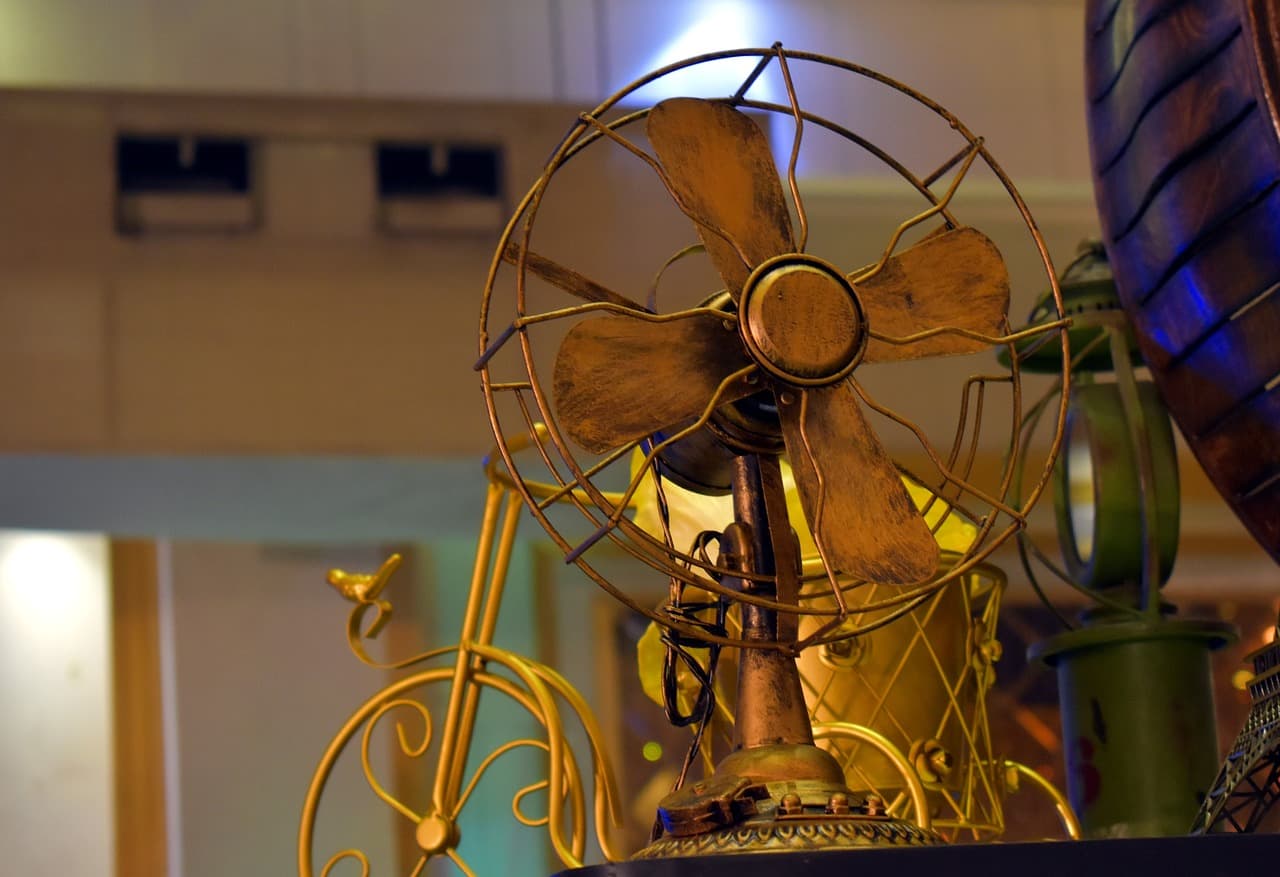Introduction to Stirling Engine Fans
Welcome to the fascinating world of Stirling Engine Fans, where science meets sustainability in a mesmerizing display of energy harnessing. These innovative fans are robust, efficient, and eco-friendly, making them a perfect fit for those seeking sustainable solutions daily.
Imagine a fan that doesn’t rely on electricity or batteries to keep you cool. Instead, it operates on principles rooted in thermodynamics and heat differentials. It may sound like something out of a sci-fi movie, but Stirling Engine Fans is real and revolutionizes how we think about cooling technology.
In this blog post, we will delve into the inner workings of these ingenious devices, explore their numerous benefits and applications, glimpse into the future possibilities they hold for sustainable energy generation, highlight some top brands and models available in the market today, provide tips for choosing the suitable Stirling Engine Fan for your needs, discuss maintenance and care guidelines to ensure longevity, debunk common myths surrounding these fans, and address frequently asked questions.
How They Work: The Science Behind Stirling Engines
The science behind Stirling engines is genuinely fascinating. These unique machines operate based on the principles of thermodynamics, which govern the transfer of heat and energy. Unlike traditional internal combustion engines that rely on explosions to create movement, Stirling engines work through a cyclic process involving changes in temperature and pressure.
At its core, a Stirling engine consists of two pistons housed within a cylinder. The hot side of the engine is exposed to an external heat source, such as burning fuel or solar radiation, while the cold side is cooled by air or water. The temperature difference between these two sides causes the gas inside (typically helium or hydrogen) to expand and contract.
This expansion and contraction drive the movement of the pistons back and forth within their respective cylinders. The resulting mechanical motion can be harnessed for various applications, including powering generators or driving fans like those found in Stirling engine fans.
What sets Stirling engines apart from other engines is their ability to convert thermal energy into mechanical energy with remarkable efficiency. Due to their closed-loop system design, where no gases are expelled during operation, they offer reduced emissions compared to conventional combustion engines.
Stirling engines can run on virtually any heat source—fossil fuels like coal or natural gas—or renewable sources like solar power or biomass. This versatility makes them ideal for sustainable energy generation in residential and commercial settings.
Stirling engine fans are one popular application that showcases this technology’s potential in everyday life. By harnessing waste heat from stoves or radiators—notably wood-burning stoves—they provide efficient airflow without requiring electricity consumption.
Not only do these fans reduce reliance on electrical grids, but they also minimize environmental impact by utilizing otherwise wasted heat resources.
This makes them attractive to individuals seeking eco-friendly alternatives for cooling and ventilation needs.
Benefits of Using Stirling Engine Fans
Stirling engine fans offer a range of benefits that make them an attractive option for those seeking sustainable energy solutions. One key advantage is their high efficiency. Unlike traditional electric fans, which can be inefficient and consume much power, excellent engine fans convert heat energy into mechanical work with remarkable efficiency.
Another benefit is their versatility. Stirling engine fans can operate on various fuels such as solar power, biomass, or even waste heat from industrial processes. This means they can be used in various applications, from cooling homes to powering small appliances.
Additionally, excellent engine fans are known for their quiet operation. Unlike noisy electric fans that can disrupt the peace and tranquility of a room, excellent engines produce minimal noise while delivering powerful airflow.
Moreover, these fans have low maintenance requirements. With fewer moving parts than traditional motors, fewer components may wear out or require regular servicing. This results in reduced maintenance costs and a longer lifespan for the fan.
Furthermore, using sustainable energy sources like solar power or biomass fuel instead of relying solely on electricity from the grid and using excellent engine fans helps reduce greenhouse gas emissions and decrease dependence on fossil fuels.
Applications of Stirling Engine Fans
Stirling engine fans have various applications in various industries and settings. Their ability to harness sustainable energy makes them attractive for commercial and residential use.
In the agricultural sector, excellent engine fans can be used for ventilation in livestock buildings. These fans provide a constant flow of fresh air, helping to regulate temperature and humidity levels, which is crucial for the health and well-being of animals.
In greenhouses, excellent engine fans can help maintain optimal growing conditions by circulating air and ensuring proper ventilation. This promotes plant growth and prevents the buildup of excess moisture or harmful gases.
Stirling engine fans also find application in residential homes as alternative cooling systems. They can be used with solar panels to power air conditioning units, reducing reliance on traditional electricity sources.
Furthermore, these fans are commonly utilized in off-grid locations or remote areas with limited access to electricity. They can provide reliable power for small appliances such as lights, radios, or charging devices.
Additionally, Stirling engine fans have potential applications in disaster relief efforts. In emergencies where power supply is disrupted, these fans could be deployed to provide essential ventilation or generate electricity for critical equipment like medical devices or communication systems.
The versatility of excellent engine fans extends beyond specific industries; they offer numerous opportunities wherever sustainable energy solutions are required. As technology continues to evolve and improve efficiency levels, we can expect even more innovative applications for this fascinating device.
The Future of Sustainable Energy with Stirling Engines
Sustainable energy has become a hot topic in recent years as the world grapples with the need to reduce carbon emissions and combat climate change. Among the many technologies explored, excellent engines have emerged as a promising solution for harnessing renewable energy.
Stirling engines are unique because they can operate on any heat source, making them incredibly versatile. This means they can generate power from solar energy, geothermal heat, or even waste heat from industrial processes. As we shift towards cleaner and more sustainable forms of energy production, excellent engines offer an exciting opportunity to maximize efficiency and minimize environmental impact.
One key advantage of excellent engine technology is its high efficiency. Unlike traditional combustion engines, which produce much waste heat, excellent engines convert thermal energy into mechanical work with minimal losses. This makes them ideal for applications where every bit of energy counts – whether powering homes or generating electricity on a larger scale.
Additionally, excellent engines are known for their durability and longevity. With fewer moving parts than other engine types, they require less maintenance and have longer lifespans. This reduces costs and contributes to their sustainability by minimizing resource consumption over time.
In terms of applications, excellent fans have already made waves in various industries, such as agriculture and building cooling systems. However, immense potential is still waiting to be tapped into across different sectors, including transportation and power generation.
As researchers continue improving existing designs and exploring new ways to optimize performance, we expect even more significant advancements in sustainable energy with excellent engines. These innovations could revolutionize how we generate power while reducing our reliance on fossil fuels – paving the way for a greener future.
Top Brands and Models of Stirling Engine Fans
Several top brands and models have gained recognition regarding harnessing sustainable energy with Stirling engine fans. These brands have established themselves as leaders in producing high-quality Stirling engine fans with impressive performance and durability.
One notable brand is Ecofan, which offers a range of excellent engine fans designed for residential and commercial use. Their models feature innovative designs that maximize airflow while minimizing noise levels. Ecofan’s excellent engine fans allow you to enjoy efficient cooling or heating without compromising environmental sustainability.
Another famous brand is WhisperGen, known for its cutting-edge technology and sleek designs. Their excellent engine fans are renowned for their energy efficiency and quiet operation. Whether you need a fan for your home or office space, WhisperGen has a model to suit your needs.
Koenders Windmills is also worth mentioning regarding top brands of excellent engine fans. They specialize in wind-powered systems that incorporate excellent engines into their design. Koenders’ innovative approach allows for converting wind power into electricity or mechanical energy with minimal maintenance requirements.
If you’re looking for a portable option, Sunpentown International offers compact yet powerful Stirling engine fans perfect for camping trips or outdoor activities. These portable models provide reliable cooling or heating wherever you go while being mindful of the environment.
It’s essential to consider factors such as size, power output, noise level, and overall quality when choosing the right Stirling engine fan for your needs. Research different brands and read customer reviews to understand which models perform best in real-world scenarios.
Remember that proper maintenance plays a crucial role in ensuring the longevity of your chosen fan model. Regularly clean the blades and ensure all components function smoothly to optimize performance.
Tips for Choosing the Right Stirling Engine Fan for Your Needs
1. Consider your power requirements: Before purchasing a Stirling engine fan, it is essential to determine your specific power needs. Different models have varying power outputs, so choose one that matches your requirements.
2. Assess the size and portability: Depending on where you plan to use the fan, consider its size and portability. If you need a portable option for outdoor activities or camping trips, opt for a compact and lightweight model that is easy to carry.
3. Look at the build quality: The quality of construction plays a crucial role in determining the fan’s durability. Look for fans made from high-quality materials such as stainless steel or aluminum alloy, as they are more resistant to wear and tear.
4. Check noise levels: Noise can be significant when choosing an engine fan for indoor use or quiet environments like libraries or offices. Look for fans with low noise levels so they don’t cause any disruption while operating.
5. Consider additional features: Some Stirling engine fans have extra features like adjustable speed settings or built-in battery backup systems. Evaluate whether these additional features are necessary based on your specific needs.
6. Read customer reviews and ratings: One of the best ways to gauge the performance and reliability of a Stirling engine fan is by reading reviews from other customers who have already used it. Pay attention to both positive and negative feedback before making a decision.
7. Check warranty options: A substantial warranty period indicates that manufacturers have confidence in the quality and longevity of their products.
Maintenance and Care for Stirling Engine Fans
Proper maintenance and care are essential to ensure the longevity and optimal performance of your Stirling engine fan. Here are some tips to help you keep your fan in top-notch condition.
It is essential to regularly clean the exterior of the fan using a soft cloth or brush. This will prevent dust and debris from accumulating on the surface, which can hinder its performance. Additionally, clean the blades carefully, as they can accumulate dirt over time.
Look for any screws or loose pieces that could need to be tightened. These parts may become loose over time due to vibrations from the engine, so it’s essential to check them and tighten them as needed regularly.
Lubrication is crucial for the smooth operation of the Stirling engine fan. Consult the manufacturer’s guidelines on how often you should apply lubricant to the engine’s moving parts. Be careful not to over-lubricate, as this can lead to clogging or damage.
Furthermore, pay attention to any unusual noises from your fan during operation. If you notice any grinding or scraping sounds, it could indicate a problem with internal components that require professional inspection and repair.
Always store your Stirling engine fan in a cool, dry place when unused. Extreme temperatures or moisture can negatively impact its performance and lifespan.
Common Myths and Misconceptions about St
Stirling engine fans have been around for quite some time, but there are still some common myths and misconceptions surrounding these fascinating devices.
Myth 1: Stirling engine fans are not efficient.
This is not true. Stirling engines operate on the principle of cyclic compression and expansion of air or other gases, making them highly efficient at converting heat energy into mechanical work. Stirling engines can achieve thermal efficiencies as high as 50%, comparable to many modern combustion engines.
Myth 2: Stirling engine fans are noisy.
While it’s true that older models of Stirling engine fans may have produced some noise during operation, advancements in technology have significantly reduced this issue. Modern versions are designed with noise reduction features, such as improved insulation and precision engineering, resulting in quieter and more enjoyable performance.
Myth 3: Stirling engine fans require constant maintenance.
Contrary to popular belief, Stirling engine fans require very little maintenance. Unlike internal combustion engines that rely on fuel combustion for power generation, these fans use heat differentials alone. This means there is no need for frequent oil changes or spark plug replacements. With proper care and occasional cleaning, your Stirling engine fan will continue to perform efficiently for years.
FAQS
1. Are Stirling engine fans environmentally friendly?
Yes, Stirling engine fans are highly environmentally friendly. They operate on sustainable energy sources such as solar power or waste heat, making them a clean and renewable alternative to traditional fans that rely on electricity generated from fossil fuels.
2. How efficient are Stirling engine fans compared to conventional electric fans?
Stirling engine fans have the potential to be more efficient than conventional electric fans because they can convert a more significant percentage of their input energy into practical work. However, the efficiency of a Stirling engine fan depends on various factors, such as the design, materials used, and operating conditions.
3. Can I use a Stirling engine fan for cooling purposes?
Yes, you can use a Stirling engine fan for cooling purposes. The movement of air created by the fan can help dissipate heat and provide comfort in hot environments.
4. Do Stirling engines require regular maintenance?
While Stirling engines generally require less maintenance than other engines, they still need some care to ensure optimal performance. Regular cleaning and lubrication are recommended to keep the parts running smoothly and efficiently.
5. Can I generate electricity using a Stirling engine fan?
Some models of Stirling engines can be configured to generate electricity instead of just powering a fan or other mechanical devices. These systems utilize the engine’s cyclic compression and expansion processes to produce an electrical output.
6. Are there any noise concerns with using Stirling engine fans?
Stirling engines are known for their quiet operation since they do not rely on combustion or explosions like internal combustion engines. Therefore, you can enjoy cool air without unwanted noise disturbances when using a well-designed and adequately maintained Stirling Engine Fan.










